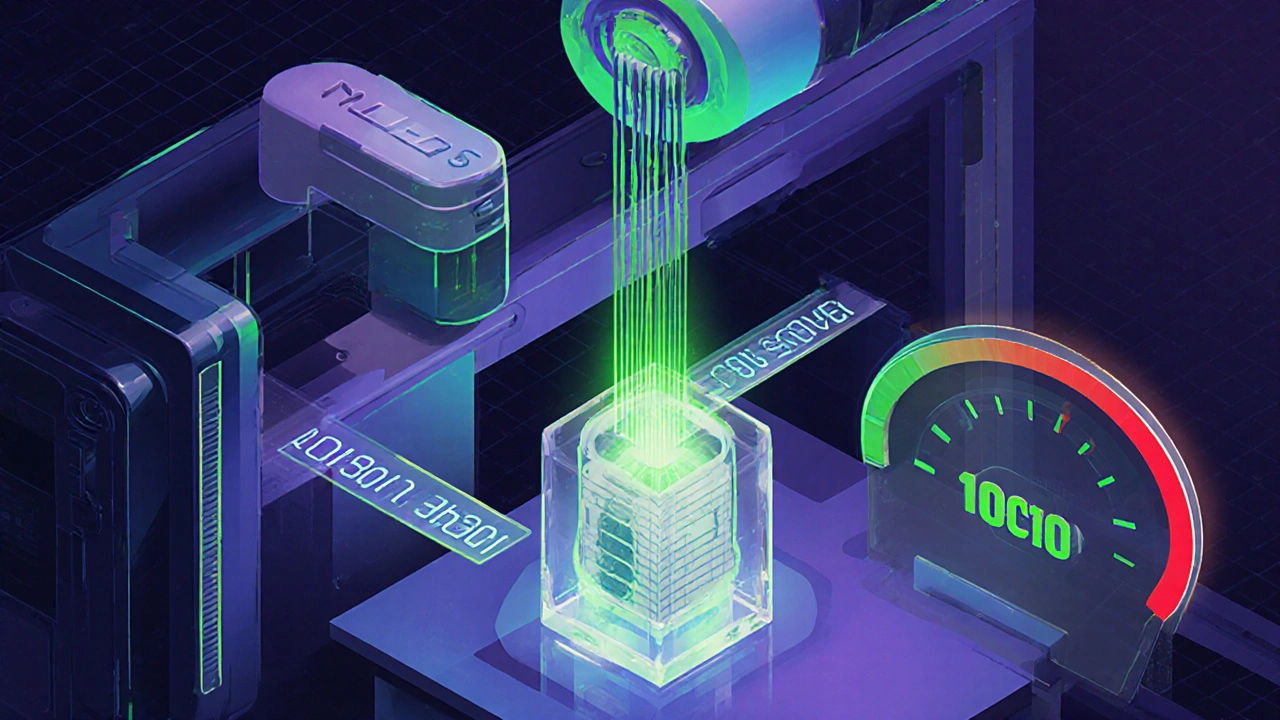
When you hear the term proof of work in crypto news, you probably picture massive mining rigs humming away. But what does that phrase really mean, and why does it matter for every digital coin you hear about?
Key Takeaways
- Proof of Work (PoW) is a consensus mechanism that secures blockchains by requiring miners to solve computational puzzles.
- The puzzle involves finding a hash value below a target, which ties together hash functions, difficulty adjustment, and energy consumption.
- Bitcoin popularized PoW, but many other blockchains use it or hybrids with Proof of Stake.
- Security comes from economic costs: attackers must out‑spend honest miners.
- Understanding PoW helps you assess a crypto’s scalability, environmental impact, and resistance to attacks.
What is Proof of Work?
Proof of Work is a consensus protocol that requires participants to perform a configurable amount of computational effort before they can add a new block to a blockchain. The idea dates back to the 1990s, but it became mainstream with Bitcoin in 2009, where it solved the double‑spending problem without a central authority.
How PoW Works Step by Step
- Gather pending transactions into a candidate block.
- Calculate a hash function (typically SHA‑256) over the block header combined with a random number called a "nonce".
- If the resulting hash is lower than the current difficulty target, the block is considered valid and can be broadcast.
- Other nodes verify the hash; if it checks out, they add the block to their copy of the blockchain.
- The miner who found the valid hash claims the block reward and transaction fees.
The randomness of the nonce means miners must try billions of combinations before hitting a valid hash - that’s the "work" part.
The Role of Difficulty Adjustment
To keep block creation steady (e.g., one Bitcoin block every ten minutes), the network automatically tweaks the difficulty target every 2016 blocks. If miners collectively find blocks too fast, the target becomes harder (fewer hashes meet it). If they’re too slow, the target eases. This self‑regulating loop ensures predictable issuance and prevents sudden spikes in reward distribution.

Why Energy Consumption Matters
Because PoW’s security hinges on computational effort, it consumes a lot of electricity. Global estimates for Bitcoin alone hover around 120 terawatt‑hours per year, comparable to a mid‑size country’s consumption. Energy consumption is therefore a central criticism of PoW, prompting many new projects to explore greener alternatives.
Security Guarantees: The Economic Barrier
Attacking a PoW chain means acquiring more hashing power than the honest network - the so‑called 51% attack. The cost to rent or build that many ASIC machines, plus the electricity bill, makes large‑scale attacks economically unattractive. In practice, PoW’s security is tied to the market price of the native token: higher prices mean higher mining revenue, which raises the cost of a hostile takeover.
Proof of Work vs. Proof of Stake: A Quick Comparison
| Aspect | Proof of Work (PoW) | Proof of Stake (PoS) |
|---|---|---|
| Security Model | Economic cost of hardware + electricity | Economic cost of locked‑up tokens |
| Energy Use | High - mining farms consume large power | Low - validation requires minimal computation |
| Reward Distribution | Block reward + transaction fees | Staking rewards + fees (often lower) |
| Attack Cost | Buy & run >50% of total hash power | Acquire >50% of total staked tokens | ight>
| Hardware Requirements | ASICs, GPUs, specialized rigs | Standard computers or validators |
Both mechanisms aim for the same goal - decentralized agreement - but they take different routes. PoW excels in proven security, while PoS wins on sustainability and faster finality.

Real‑World Use Cases of Proof of Work
Beyond Bitcoin, several major chains still rely on PoW:
- Ethereum used PoW (Ethash) until its 2022 "Merge" to PoS. \n
- Monero employs a memory‑hard PoW designed to resist ASIC dominance.
- Zcash uses the Equihash PoW, offering optional privacy features.
These projects illustrate how PoW can be tuned - by changing the hash algorithm or adjusting difficulty - to meet specific privacy or decentralization goals.
Common Misconceptions About Proof of Work
- "PoW is just a waste of electricity" - While energy use is high, many miners locate operations near renewable sources or waste‑heat utilisation projects.
- "Anyone can mine profitably" - As difficulty rises, only those with efficient hardware and low electricity costs stay competitive.
- "PoW is obsolete" - The resilience of Bitcoin’s network, still running PoW after 15 years, proves its durability.
Future Directions: Hybrid and Alternative Consensus
Developers are experimenting with hybrids that blend PoW and PoS, or add another layer like Nakamoto Consensus. These aim to keep PoW’s security while reducing energy draw. Examples include Decred’s hybrid model and some newer Layer‑2 solutions that offload transaction validation off‑chain.
Frequently Asked Questions
What problem does proof of work solve?
PoW prevents double‑spending and ensures that all participants agree on the same transaction order without a central authority. It does this by making it costly to add a fraudulent block.
How is a PoW hash calculated?
Miners take the block header, combine it with a nonce, and run it through a cryptographic hash function (e.g., SHA‑256). They repeat with different nonces until the output hash is lower than the network’s target value.
Why does difficulty adjustment matter?
It keeps block times stable despite fluctuations in total hashing power. Without it, a surge in miners would flood the chain with blocks, destabilizing token issuance and transaction confirmation times.
Is proof of work more secure than proof of stake?
Security is measured differently. PoW’s security is rooted in the physical cost of hardware and electricity, making attacks financially prohibitive. PoS relies on the economic cost of owning and locking up tokens. Both can be secure if the underlying economics are sound, but PoW has a longer real‑world track record.
Can proof of work be made greener?
Yes. Miners can locate farms near renewable energy, use waste heat for heating, or adopt more efficient ASIC designs. Some projects also experiment with low‑energy hash algorithms, though they trade off resistance to specialized hardware.
